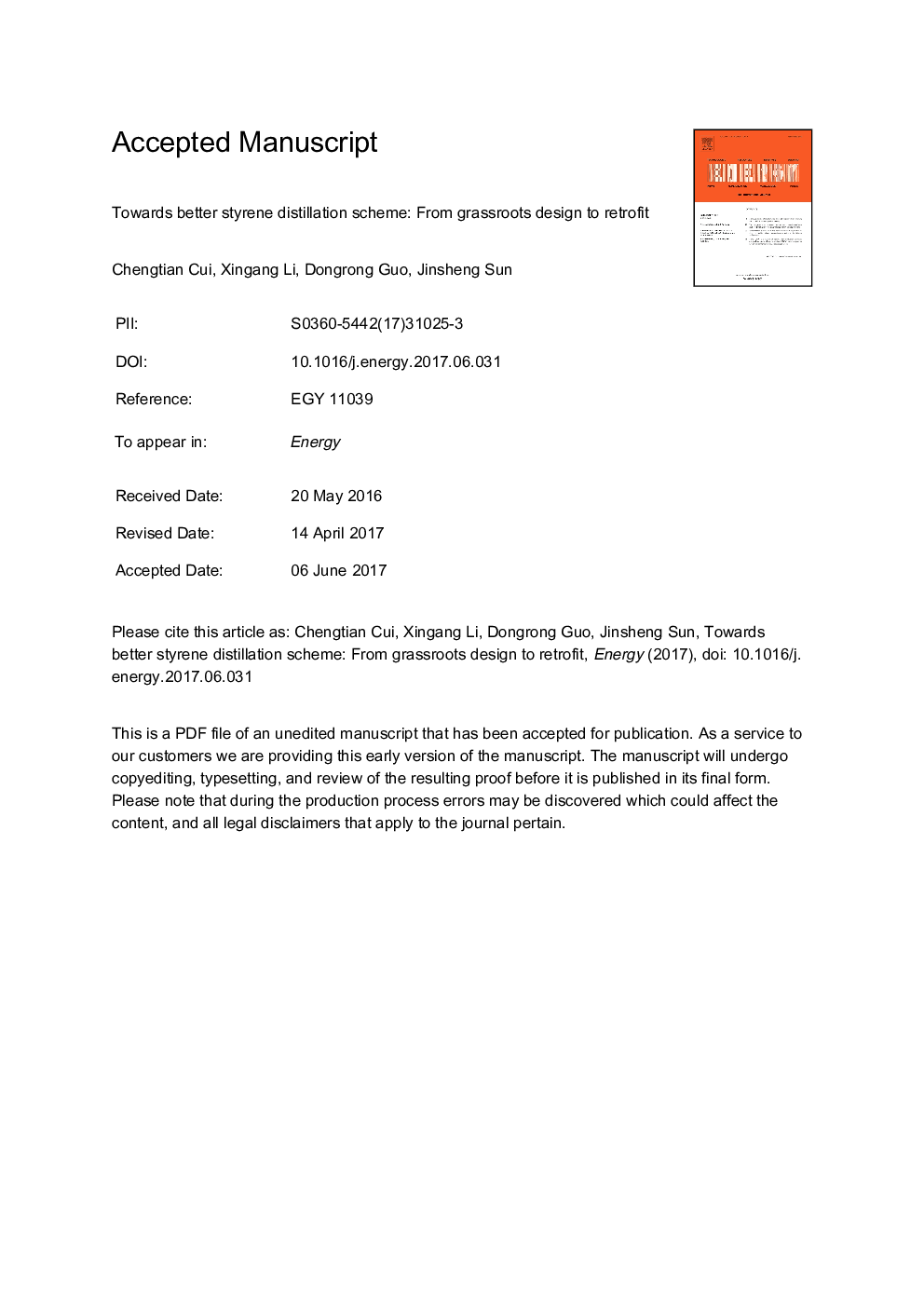| Article ID | Journal | Published Year | Pages | File Type |
|---|---|---|---|---|
| 5475823 | Energy | 2017 | 27 Pages |
Abstract
The current state-of-the-art commercial styrene distillation schemes, featured by conventional distillation columns to purify styrene, are introduced with energy, exergy and economic analyses. Amongst all the procedures the separation of ethylbenzene/styrene, the critical close-boiling system, accounts for â¼65% of the total energy requirement. To improve the energetic efficiency, double-effect distillation (DED) and heat pump distillation (HPD) are suggested as competitive improvements on conventional distillation schemes (CDSs), which give birth to advanced distillation schemes (ADSs). In addition, sensitivity analysis is carried out to determine the optimal operational parameters of columns in styrene distillation process. Taking the CDSs as benchmark processes, the ADSs with DED and HPD can lower operating costs by up to 30% and 40%, respectively. The synergistic effect makes retrofit proposals' payback period very attractive, through considerably energy costs reduction and uttermost equipment reuse. In the view of total annualized cost (TAC), the ADSs can cut a corner of â¼35-40% from the CDSs. Specifically, the ADS using HPD slightly outperforms its DED counterpart in TAC comparison. Despite energetic or monetary advantage, the ADSs also show their environmental drawback of higher exergy losses than the CDSs.
Related Topics
Physical Sciences and Engineering
Energy
Energy (General)
Authors
Chengtian Cui, Xingang Li, Dongrong Guo, Jinsheng Sun,
